Learning to be a better teacher: What can a novice teacher educator learn from his students through engaging in formative assessment practices? – Kennedy Chan
Formative assessment (FA), defined as assessment activities that provide evidence about student achievement for teachers to make decisions about the next steps in instruction (Black & Wiliam, 2009), has been a very attractive idea to educators and policy makers. Ample research evidence has shown that FA improves student achievement (e.g., Black & Wiliam, 1998a; Black & Wiliam, 1998b). Perhaps, a much less valued function of FA is its potential in promoting teacher learning. Indeed, evidence is accumulating on how teachers can enhance their professional knowledge base of teaching through engaging in FA practices (e.g., Falk, 2012; Harisson, 2005). In this article, I will illustrate how engaging in FA practices allowed me, a novice teacher educator, to develop new knowledge of teaching about science teaching. Specifically, I describe how I learnt to better attune to the learning needs of my students through the careful elicitation and interpretation of their thinking during my attempts to introduce a FA tool, called post-box strategy (Kruse, 2001) to my students. To achieve this, I will first provide a brief context about my course. I will then describe the insights I derived from an analysis of student thinking in my two attempts to infuse the post-box strategy into my course.
The students I am teaching are all prospective secondary school science teachers. To nurture their dispositions of enacting FA in their future teaching, my methods course not only aims at equipping them with new FA strategies, but also provides opportunities for students to experience, as a learner, the ‘power’ of FA. In every session, students need to complete a preparatory task, which elicits their initial views about an issue of focus (e.g., their views about misconceptions in teaching biology) (Figure 1). After engaging in the class activities, they complete an exit slip in which they identify the most important or impressive learning (Figure 2). Through interpreting the information gathered from the exit slip, I can not only collect evidence of learning, but also better understand how my instruction can be adjusted to suit their learning needs. This applies to my trial use of some teaching strategies, like the post-box strategy in the present case.
I first trial implemented the post-box strategy in my exemplar analysis session. During the class session, I asked students to share and discuss in pairs their views about two sample essays from previous cohorts (i.e., exemplars) elicited in the preparatory task. They then posted their post-box tickets (Figure 3) anonymously into the post-boxes. Each group was then assigned to summarize the views of the class and present the ideas. I finally facilitated a whole class discussion based on their evolving thoughts about the two exemplars (Figure 4 (a)). My student teachers expressed their views about the post-box strategy in the exit slip:
I think that the post box technique is fun. It could be a useful technique in the classroom because it helps to collect the opinions from students in a short time. The opinions will be processed and then presented to the whole class to facilitate students’ learning. Yet, I think that the post-box technique may only be suitable for humanity subjects.
Although I wonder if the post-box strategy would be effective in a real classroom as students are required to walk around the class and post their notes into the corresponding boxes which can be very time consuming and create chaos, I did enjoy this strategy in this session. By using this strategy, we did not have to read all the responses on our own, but listen and try to summarize all the ideas from other groups’ presentations.
From their responses, I started to realize that although my student teachers enjoyed the post-box activity and saw the potentials of this strategy in enhancing learning, they still showed reservations of using it to teach science. In other words, I was too naïve to assume that by simply showing my students this strategy, it would automatically add to their instructional repertoires of teaching science. This realization stimulated me to think about how I could better assist them in using this FA strategy in their own classroom setting. In my later session, I tried to model how this strategy could be utilized in the context of teaching science concepts. I selected some statements containing biology misconceptions (Figure 4 (b)). Students were set to work in pairs to examine the validity of each statement and posted the group’s views into the post-box. Students were then asked to summarize and present the views collected in each of the boxes. The presentation was followed by a teacher-facilitated discussion of the scientific concepts related to the misconception statements. Below are some students’ opinions in the exit slip:
In the preparatory task for this session, I thought I don’t have much misconceptions, but after the post-box activity, it reminded me so much detail that I have forgotten.
We chose to apply the post-box activity in our teaching practicum and we found students also enjoyed it very much. We didn’t expect students would be so enthusiastic in understanding the reason behind since we expect students were exam-oriented and would only want to know whether they are correct or not.
I agree that the post-box strategy is a good way for students to actively participate in correcting their misconceptions or just checking their concepts in general — it will be nice if the curriculum allows time for such kind of activity. Moreover, teachers may have misconceptions too. This activity alerts all of us the importance of preventing the occurrence of errors-breed-errors.
From their comments, it appears that my students started to be more aware of their insufficient subject matter knowledge (which they were not aware before the session based on their views in the preparatory task), they also began to see how the post-box strategy could be used as a valuable tool for teaching science. Encouragingly, they even mentioned their trial-implementation of this strategy in their own classrooms in the teaching practicum. Yet, their response also reminded me that I might have overlooked some constraints they might face in the secondary school context (e.g., a tight timeframe to cover the curriculum) which would be worth further discussion.
To summarize, I have learnt a lot through engaging in FA practices which include the use of preparatory task to elicit students’ initial views and the use of exit slip to chart their learning from my sessions. It was through the careful interpretation of their responses I learnt to better attune to their needs that I was not sensitive to. I hope through continual inquiry into my practices I would develop more robust knowledge of teaching about science teaching. In closing, I would like to share the following quote which I learnt from the exit slip of my student:
“Every teacher needs to improve not because they are not good enough, but because they can be even better. Being a good teacher is not just about finding the ways to test your students, but seeking the opportunities to improve yourself from the students.” (Wiliam, 2012)
I strongly believe that it is through our desire to learn from our students that we can become better teachers. I hope my sharing here would resonate with the readers who are striving to become better teachers in the university.
Figure 1: Preparatory Task [Back]
Students complete a preparatory task which documents their initial views about an issue for discussion in the class session.
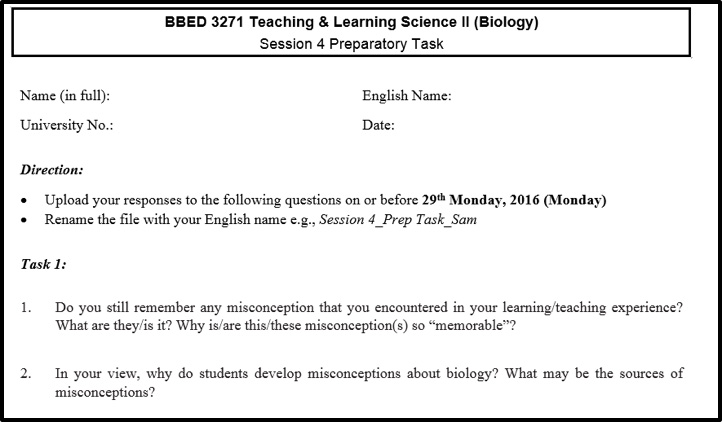
Figure 2: Exit Slip. [Back]
Students reflect on their learning after attending the session.
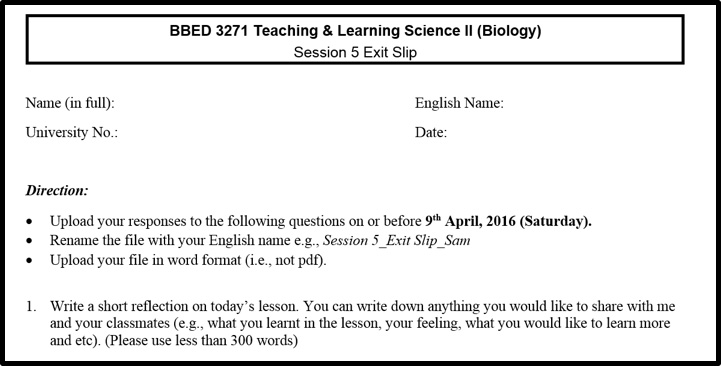
Figure 3: Post-box ticket. [Back]
Students worked in pairs to discuss their views about the exemplars they analysed in their preparatory task. Their consensual views were then posted into a post-box.
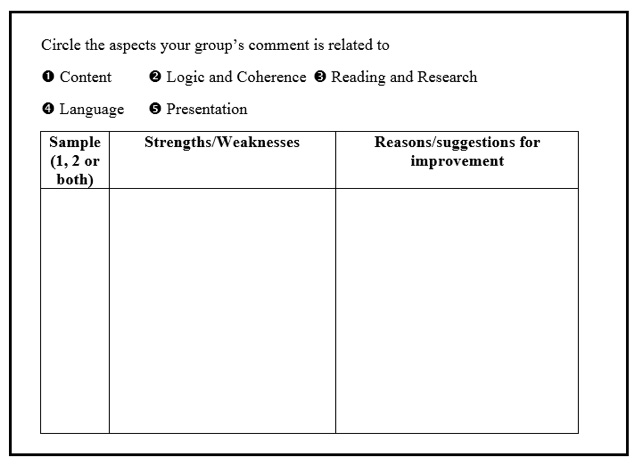
Figure 4: Two attempts at introducing the post-box strategy.[Back] How the post-box strategy was implemented in the two attempts at introducing the strategy to the students.
| (a) First Attempt | (b) Second Attempt | |
|---|---|---|
| Context | Analysis of exemplars | Dealing with misconceptions in Biology |
| Stage 1 | Students shared their views about the exemplars in relation to a particular focus in pairs and completed the post-box tickets
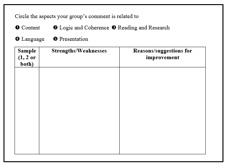 |
Students examined the validity of a statement containing misconceptions in pairs and completed the post-box tickets
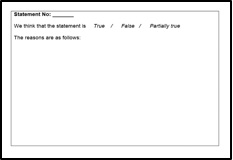 |
| Stage 2 | Students posted their tickets into the post-boxes
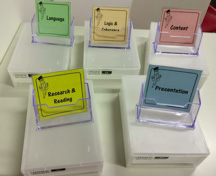 |
Students posted their tickets into the post-boxes
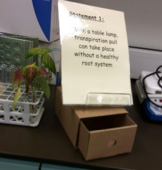 |
| Stage 3 | One group was assigned to summarize the views about the exemplars collected in each post-box
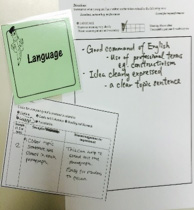 |
One group was assigned to summarize the views about each of the misconception statements in the respective post box
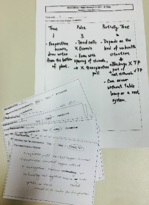 |
| Stage 4 | Teacher facilitated the student presentations by highlighting the important ideas | Teacher facilitated the student presentations and further probed into students’ subject matter knowledge related to the misconception items |
References
- Black, P., & Wiliam, D. (1998). Assessment and classroom learning. Assessment in Education, 5, 7–74.
- Black, P., & Wiliam, D. (1998b). Inside the black box: Raising standards through classroom assessment. Phi Delta Kappan, 80(2), 139–148.
- Black, P., & Wiliam, D. (2009). Developing the theory of formative assessment. Educational Assessment, Evaluation and Accountability, 21(1), 5-31.
- Falk, A. (2012). Teachers learning from professional development in elementary science: Reciprocal relations between formative assessment and pedagogical content knowledge. Science Education, 96(2), 265-290.
- Harrison, C. (2005). Teachers developing assessment for learning: Mapping teacher change. Teacher Development, 9(2), 255-263.
- Kruse, D. (2011). Thinking Strategies for the Inquiry Classroom (ebook). Carlton, Victoria: Curriculum Press.
- Wiliam, D. (2012, December). How do we prepare our students for a world we cannot possibly imagine? Keynote speech presented at the Specialist Schools and Academies Trust (SSAT) Conference.



